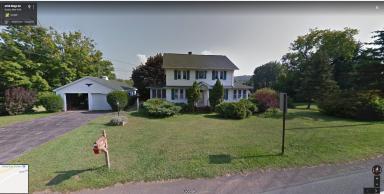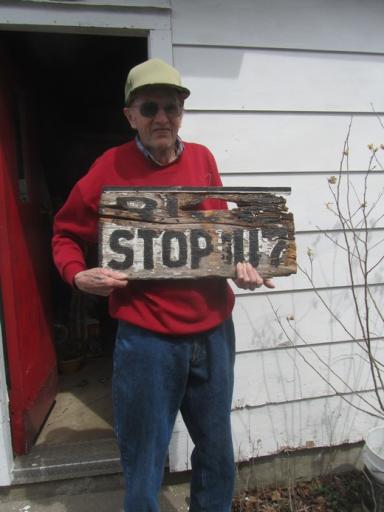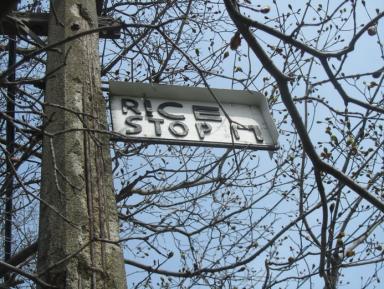If you find errors OR have additional information about this site, please send a message to contact@waynehistorians.org.
Rice Family Home
| Historic Site #: | 12-172 (Gone) Type: F2,I2 | Town: | Sodus | ||
| Site Name: | Rice Family Home | GPS Coordinates: | 43.23567, -77.08493 | ||
| Address: | 6258 Ridge Road Sodus New York | ||||
| Description: | |||||
| Josiah Rice was banned from teaching school in Williamson because of his commitment to education for free people of color. His sons were officers in the US Colored Troops and recruited at least 2 soldiers from the black Maxwell Settlement as part of their regiment. Folklore tells of this house being used as a safe house for the Underground Railroad. Later it was a stop for the Rochester and Sodus Bay Railway (trolley). | |||||
| 🔊Audio: Tour Sound Bite |
| Historic narrative: | |||||
The Rice family were part of the group that left the Sodus Presbyterian Church in 1843 over the issue of slavery. Josiah Rice contributed to a collection for the American Anti-Slavery Society, taken by Stephen Foster and Abby Kelley Foster in 1852. On October 9, 1860, minutes of the East Williamson School District (#18), which also included families from Sodus, noted that voters agreed “that we shall never hire any of the Rice family or any other abolitionist for our teacher.” In 1863, two Rice sons of the ardent anti-slavery activists, Josiah and Elizabeth of Sodus, Lewis B. and Judson were both assigned as officers of the newly established United States Colored Troops. In 1864, two African-American men, James A. Potter and Philip Newport from the Maxwell Settlement on N. Geneva Rd., Sodus, enlisted in the Civil War with the intent and encouragement of joining the unit under the command of these Rice brothers, known to their families. However, by the time they arrived in camp, the two Rice brothers were no longer in command. Judson Rice was reported wounded and missing in action and Lewis had been sick and then discharged. The Rice Family ran a prosperous dairy farm for many years. In the early 1900s, milk was bottled here and was sent out to Union Hill in Webster via the trolley. They had their own Trolley Stop (#117). The house across the street where the Trolley stop pole and sign still exist was built in 1930 and is the home of Stan and Dina Coppens who are long time residents of Sodus. Stan is pictured above with what may very well be the last original Rochester and Sodus Bay Railway trolley sign. I interviewed Stan once and he told me that local folklore is that the Rice family home was said to be part of the Underground Railroad and had a tunnel used to hide freedom seekers. There is a sweet irony that this location may have been both an Underground Railroad stop and Rochester and Sodus Bay Railway stop. | |||||
Freedom A shared Sacrifice! by Marjory Allen Perez, 2018; pages 238-241 .
Uncovering the Underground Railroad, Abolitionism, and African American Life in Wayne County, New York, 1820-1880 Page 347
Town of Sodus Historical Society Trolley Web Page
YouTube Video Steal Away



